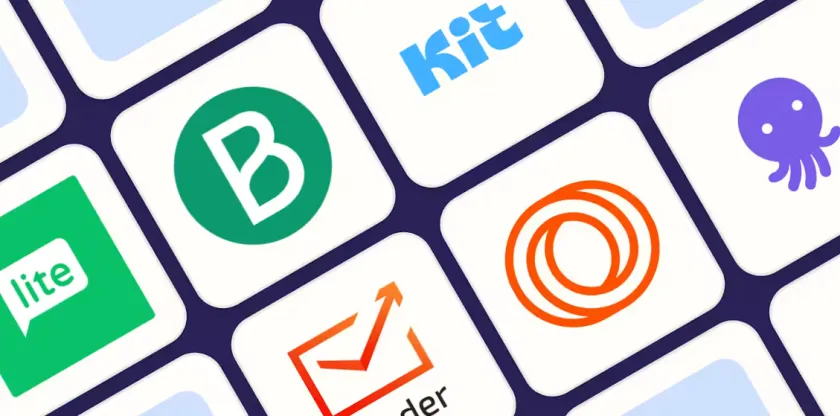Want to connect with customers in a personal way? Email marketing is your answer. It helps build strong relationships, grows customer loyalty, and skyrockets sales. Ready to learn how to build an email list from scratch? Keep reading to discover simple ways to create effective newsletters and set up automated emails that sell.
Setting Up Your Email Marketing Foundation
First, you'll need a solid base for your email efforts. This means picking the right platform and getting it set up correctly from the start.
Choosing the Right Email Marketing Platform for E-commerce
Choosing the right platform is key for e-commerce success. Mailchimp is a great choice for beginners. Klaviyo offers powerful e-commerce features. Omnisend combines email with SMS marketing. Each platform has pros and cons. Mailchimp is user-friendly, but can become expensive as your list grows. Klaviyo offers strong segmentation, but may be complex for some. Omnisend is good for omnichannel marketing.
Consider pricing. Some offer free plans for smaller lists. Others have tiered pricing based on subscribers. Scalability matters too. Can the platform handle your future growth? Think about what you need now and what you'll need later.

Integrating Your Email Platform with Your E-commerce Store
Connecting your email platform with your store is very important. This integration allows data to flow. It's easy to sync customer info with Shopify. WooCommerce also connects without hassle. This way, new customers are added to your email list automatically. Plus, their purchase data is tracked. That data helps you send targeted emails.
Building Your Email List From Zero
Now, let's get people to sign up for your emails. This means attracting visitors and turning them into loyal subscribers.
Creating High-Converting Opt-In Forms
Opt-in forms are what you use to get those sign-ups. Pop-ups grab attention. Embedded forms fit naturally on a page. Slide-in forms appear without being too pushy.
Think mobile. Most people browse on phones. Make sure your forms look good on small screens. Also, test different designs. Try various headlines or button colors. See what works best for your audience.
Offering Irresistible Incentives: Lead Magnets
A lead magnet is a "freebie" you offer in exchange for an email. Offer a discount to new subscribers. Try free shipping on their first order. Give away an exclusive guide related to your products. Host a contest or giveaway. These incentives make people want to subscribe.
Tailor your offers. A clothing store might offer a style guide. A coffee shop might give a free drink. What would attract your ideal customer?
Promoting Your Email List Across Channels
Don't hide your email list! Promote it everywhere. Add a signup form to your website's footer. Share it on social media platforms. If you have a physical store, put up signs. Include a signup card in your packages. Every touchpoint is an opportunity to grow your list.
Crafting Effective E-commerce Newsletters
Okay, you've got subscribers. Now what? It's time to send emails they'll love.
Segmenting Your Email List for Personalized Content
Don't treat all subscribers the same. Segment your list. Divide them by demographics such as age and location. Use purchase history. Did they buy shoes or shirts? Track their browsing behavior. Which products did they view?
Segmentation lets you send personalized content. Send special offers to specific groups. A customer who buys running shoes might like related gear. Send recommendations based on past purchases.
Writing Compelling Subject Lines and Email Copy
Your subject line is your first impression. Make it count! Use power words like "Free," "New," or "Limited." Create urgency with phrases such as “Don't miss out!”
Tell a story in your email. Show the value of your product. Highlight how it solves a problem. Also, keep it short and sweet. People skim emails quickly.
Designing Visually Appealing E-commerce Emails
Visuals matter. Use your brand colors and logo. Ensure emails look good on phones. Large images can slow down loading.
Use clear call-to-action buttons. "Shop Now" or "Learn More" make it easy to take the next step.
Automating Your E-commerce Email Campaigns
Automation saves time and boosts engagement. Set it up once, and it works in the background.
Welcome Email Series
Create a welcome email series. It introduces your brand to new subscribers. Setting expectations lets them know what to expect. For example, new subscribers get a welcome discount. This encourages their first purchase.

Abandoned Cart Recovery Emails
People abandon carts all the time. Did you know that the average cart abandonment rate is around 70%? Send them a reminder. Show them what they left behind. Offer an incentive to complete the purchase. Free shipping can work wonders.
Post-Purchase Email Sequence
Don't forget about customers after they buy. Send an order confirmation. Give shipping updates. Thank them for their purchase. Ask for a review, and recommend other products they might like.
Measuring and Optimizing Your Email Marketing Performance
Track your results and improve over time. Data is your friend.
Key Email Marketing Metrics to Monitor
Watch your open rates. How many people open your emails? Click-through rates show how many click links. Conversion rates track purchases. Bounce rates tell you about invalid email addresses. Unsubscribe rates show if you're losing subscribers.
A/B Testing Your Email Campaigns
Test everything. Try different subject lines. See which gets more opens. Test different content and calls to action.

Analyzing Data and Making Improvements
Use data to understand your customers. Optimize how often you send emails. Refine your segmentation. Small changes can lead to big results.
Conclusion
Email marketing is a powerful tool for new e-commerce stores. Set up your foundation. Build your list. Craft great newsletters. Automate your campaigns. Always measure and optimize. A well-nurtured email list is a valuable asset. Start building yours today!